Photos: The White Victims of Our Opioid Crisis
Chris Roberts, American Renaissance, November 11, 2019
As a white advocate, one of my biggest concerns is America’s “opioid crisis.” The USA’s annual number of deaths due to drug overdoses — overwhelmingly caused by opioids, synthetic or otherwise — is catastrophically high. Those deaths are disproportionately white as well, which is one of the reasons this crisis is sometimes referred to as the “white death,” and why some of the pills most associated with the crisis (e.g. OxyContin and Fentanyl) are nicknamed “hillbilly heroin.” This problem is a big part of the reason why life expectancy of whites is going down.
| Year | Total Overdose Deaths in the US |
| 2014 | 47,055 |
| 2015 | 52,404 |
| 2016 | 63,600 |
| 2017 | 70,237 |
| 2018 | 68,500 |
(Sources for these numbers, and details about them can be found here and here.)
That is a total of 301,796 overdose deaths in the last five years — more than the populations of Pittsburgh or Cincinnati. Our liberal elites don’t care much about these casualties — after all, they are mostly poor whites — but those who care about our race should remember that we don’t need just better immigration laws, a wall on the border, and an end to affirmative action. We need spiritual and economic renewal for our people.
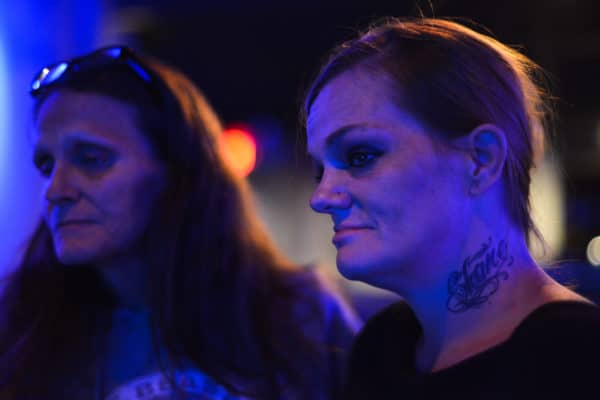
Chasity Holt, a 36-year-old heroin addict, listens with her mother Amy to a sermon at City on a Hill church in Cincinnati, Ohio. ”I used to be a good person,” says Chasity, who showed up at the church as a last resort, saying that she had overdosed only the day before. ”I stole, I lied, I cheated, I burned so many bridges,” she says of her life as an addict, which began with drinking, moved to crack, to painkillers and finally heroin. ”My kids they were there witnessing all this.” She has five kids, two of whom live with a relative and three live with her and her mother. (Credit Image: © Miguel Juarez Lugo / ZUMA Wire)
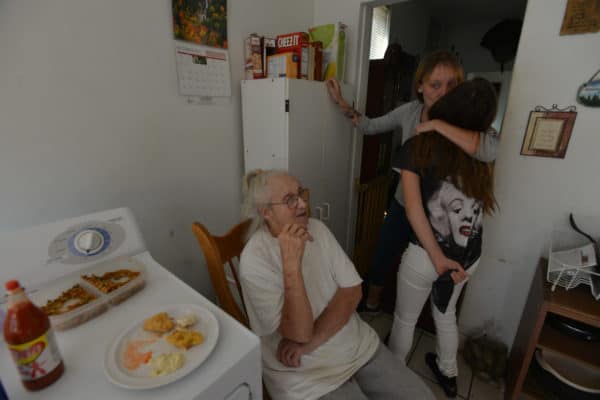
Saleha Young, a heroin addict, kisses her daughter Samantha, 12, after they have lunch with Saleha’s mother Margaret, 84, at her house in the East Side of Hamilton, Ohio, where heroin addiction is rampant. Margaret, who understands her daughter’s fierce addiction without judgement and accepts she can do little about it, has legal custody of her granddaughter because of her daughter’s addiction and run-ins with the police. They share the house with Saleha’s father and Margaret’s brother. (Credit Image: © Miguel Juarez Lugo/ZUMA Wire)
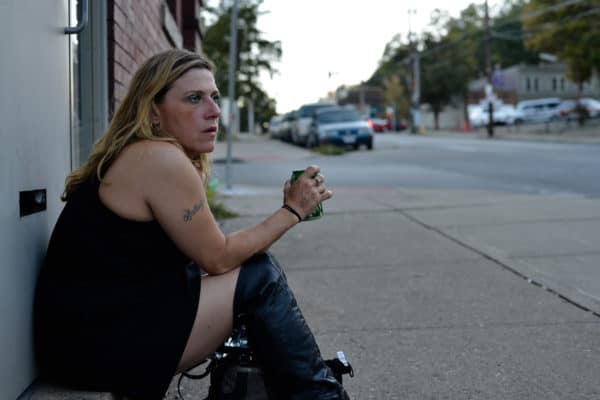
Sherry Sams, 41, a heroin addict who has lost four children to the social service system, sits at her favorite spot, a vacant building along State Street and Dutton Avenue, where she works as a prostitute for drug money. The spot is in the crime infected Lower Price Hills neighborhood of Cincinnati, an epicenter of a growing heroin crisis across the U.S. Sams says she has tried several drug rehab programs, but has been unable to succeed. She says part of the problem is that heroin withdrawal is extremely painful, and so the drug becomes like a medication. (Credit Image: © Miguel Juarez Lugo / zReportage.com / ZUMA Press)
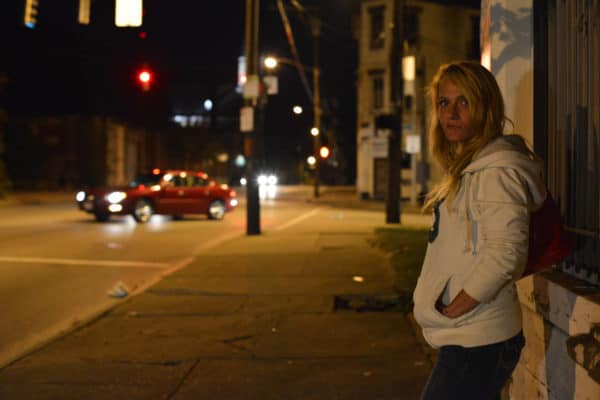
Candace Greene, 33, a former nurse who is now a heroin-addicted prostitute, waits on the street for costumers in the McMicken neighborhood in Cincinnati, Ohio. Candace says in her early 20s, she began selling and using OxyContin she acquired from her nursing job, but then a cousin told her heroin was a cheaper high, so she began using it. She has three kids who are in the legal custody of her sister. Candace is homeless, and lives in an abandoned building. (Credit Image: © Miguel Juarez Lugo / ZUMA Wire)
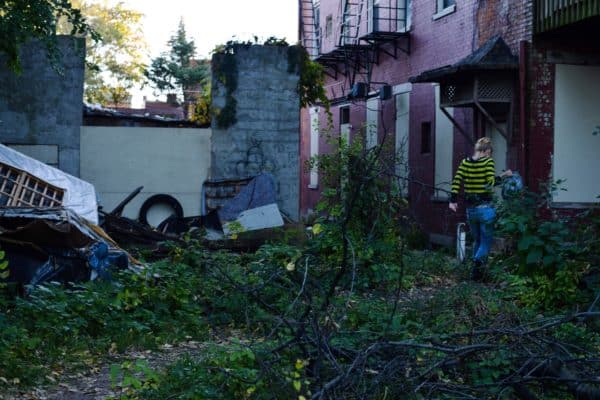
Shalonda ‘Shonda’ Strange, a 31-year-old heroin addict, prostitute, and mother of two, walks toward the abandoned building where she’s lived for the past year in a basement room with six others, all heroin addicts and squatters. She says she has overdosed five times, and tried rehab at least five times, but it has never worked. She was raised by her grandmother in the Upper Price Hill neighborhood of Cincinnati. (Credit Image: © Miguel Juarez Lugo / zReportage.com / ZUMA Press)
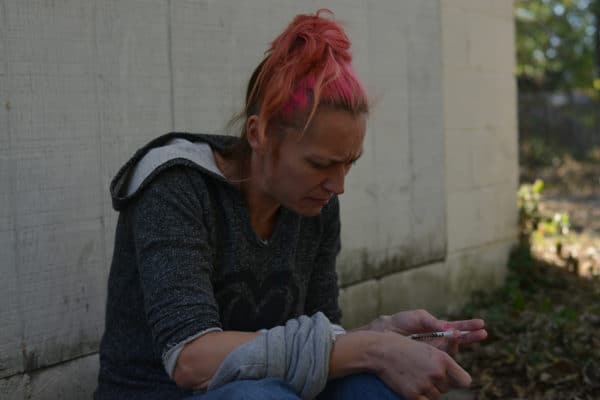
Tara, a mother of five, injects heroin in her vein by an abandoned garage in an alley in the South Side neighborhood of Hamilton, Ohio, where heroin addiction is rampant. Tara, who did not want her last name used, often sleeps in these alleys, which are near the home where her two young children live with their father and his mother. She has lost her three other children to the social services system. Her children’s father only allows her to visit two kids before 9 a.m., when she is still sober, and when she must clean their rooms. (Credit Image: © Miguel Juarez Lugo / ZUMA Wire)
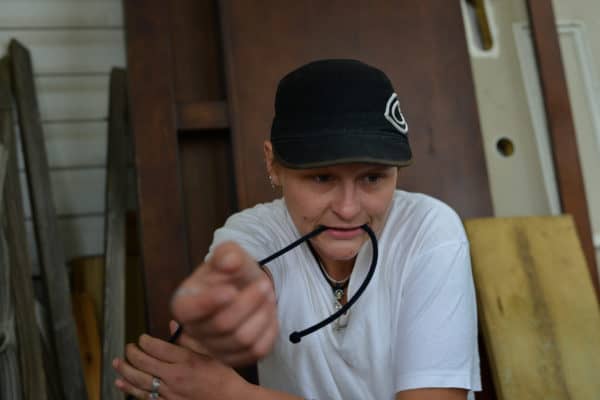
Krystal Hatfield, 28, a heroin addict, uses the string from her hoodie to squeeze a vein as she prepares to shoot her morning fix of the drug, called a ”bang,” on the back porch of an abandoned house in the East Side of Hamilton, Ohio. A mother of two — the first child she had at 14, the second at 16 — she says she uses heroin in part to cover the pain of her childhood, when she was molested by a cousin from the age of 4 to 11. She says heroin is especially difficult to quit because of the pain of withdrawal, which drives people back to the drug. She makes money most mornings by performing phone sex for an old truck driver — her ”sugar daddy” — who pays her via Western Union. In the afternoons, she usually works as a prostitute to make money to maintain the high. (Credit Image: © Miguel Juarez Lugo / ZUMA Wire)
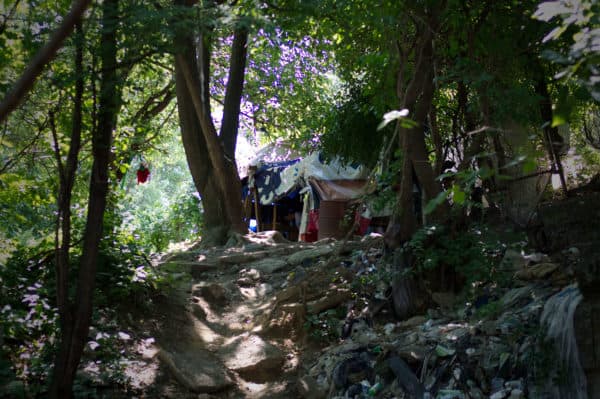
Empty heroin bags, drug paraphernalia and syringes are found between piles of trash at the heroin camp located under the North Second Street overpass, in the Kensington Section of Philadelphia, PA. (Credit Image: © Bastiaan Slabbers / NurPhoto via ZUMA Press)
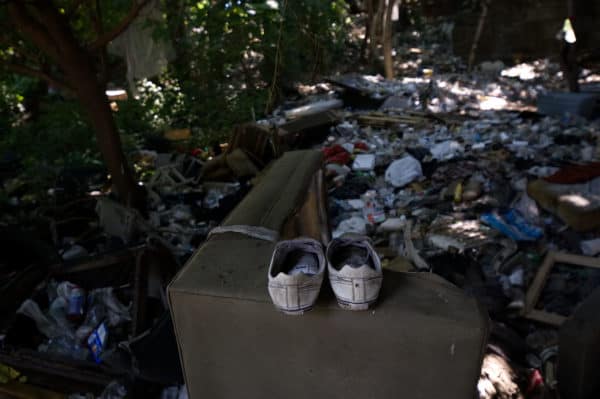
More of the same open air heroin camp in Pennsylvania. (Credit Image: © Bastiaan Slabbers/NurPhoto via ZUMA Press)
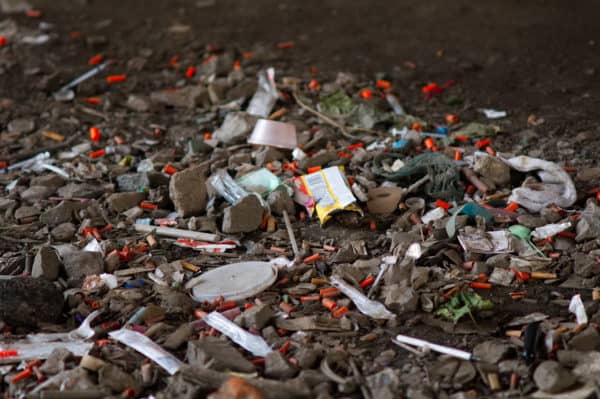
Those small orange things are needle caps. (Credit Image: © Bastiaan Slabbers/NurPhoto via ZUMA Press)
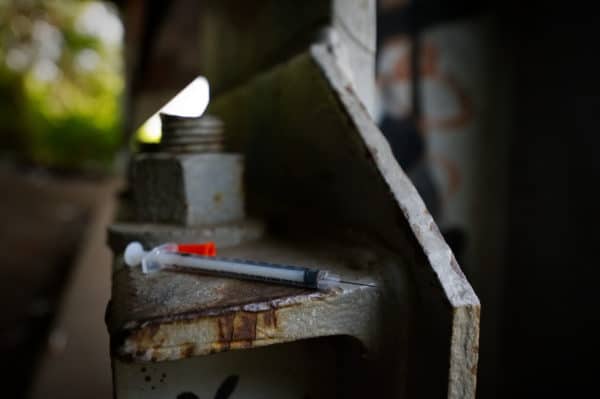
(Credit Image: © Bastiaan Slabbers/NurPhoto via ZUMA Press)
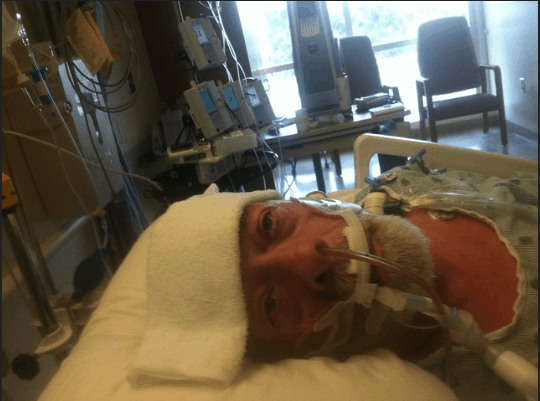
A Fentanyl-overdose patient in a hospital bed. (Credit Image: Sherri Abendroth / Flickr)
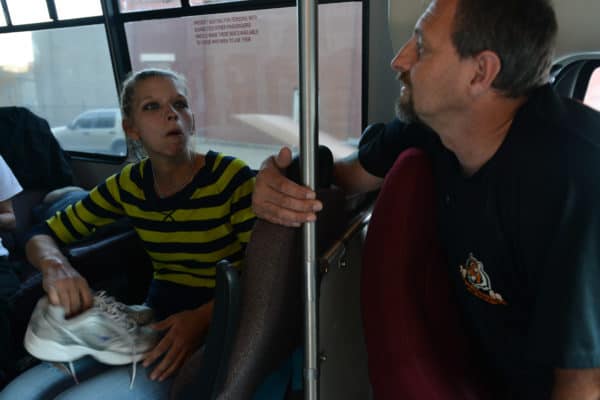
Shalonda ”Shonda” Strange, 31, a prostitute and heroin user, talks to pastor Jim Turner of the Lord’s Gym church, who runs a street outreach program each Tuesday in the poorest and most violent sectors of Cincinnati, Ohio. The Lord’s Gym van seeks out prostitutes — who are usually heroin addicts — to offer them a warm meal, a place to pray, get a hygiene kit and maybe some garments. Shonda says she started off snorting heroin but only days later started shooting, and now seven years later she is still struggling with the addiction. (Credit Image: © Miguel Juarez Lugo / ZUMA Wire)
A sign of just how bad this crisis has become can be found in the warnings pharmacies post about not carrying the most notorious opioids, and the ads one now sees in major cities for Naloxone, a drug that can be administered to someone in the midst of an opioid overdose to save their life.
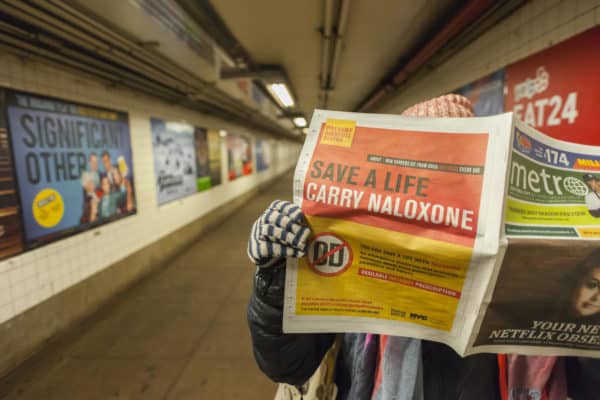
A commuter in NYC reads a copy of a newspaper with a New York Department of Health advertisement urging people to carry Naloxone, an antidote for an opioid overdose, seen on Saturday, April 1, 2017. As an opioid epidemic spreads through the country, health departments are urging the carrying of Naloxone in case you encounter an overdosed addict. (Credit Image: © Richard B. Levine/Levine Roberts/Newscom via ZUMA Press)
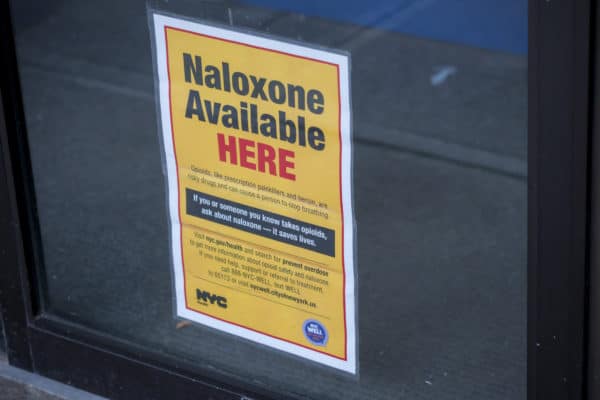
A sign on the door of a pharmacy in New York on Tuesday, March 20, 2018 informs customers that the store carries Naloxone, a drug used to treat opioid overdoses. (Credit Image: © Richard B. Levine / Levine Roberts / Newscom via ZUMA Press)
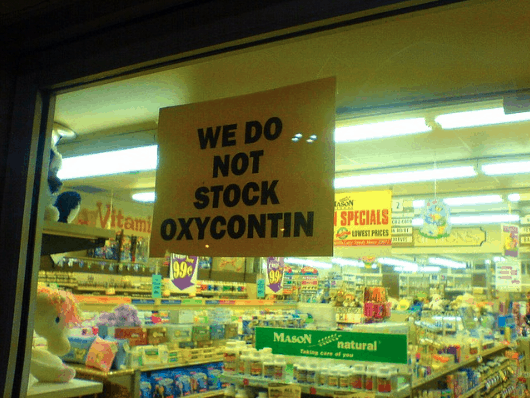
(Credit Image: Redfishingboat / Flickr)
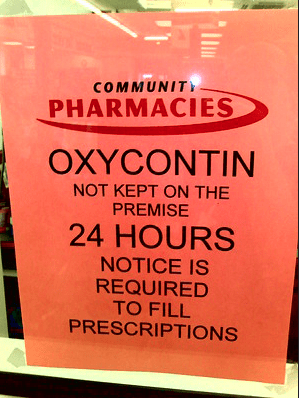
A pharmacy in Dexter, Maine. (Credit Image: Shawn Honnick / Flickr)
Our political class, which seems to care more about illegal immigrants, will note help us survive this plague. The mainstream media prefer to look the other way. Universities are too busy teaching about “white privilege” to educate students about this crisis. It’s up to us.















